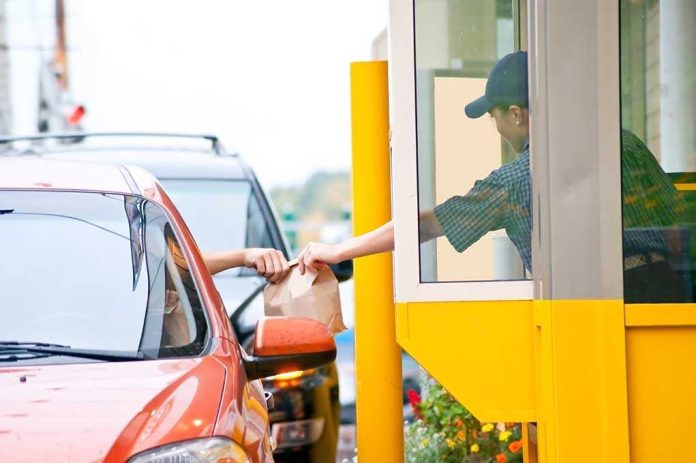
A new initiative by a major fast-food chain could redefine the landscape of food assistance in America, but is it a solution or a new problem?
Story Highlights
- Fast food chain launches $1 meals for SNAP recipients.
- Program aims to tackle food insecurity amid rising inflation.
- Debate ensues over the nutritional value of fast food.
- Partnership with state agencies to process EBT payments.
Fast Food and SNAP: A Controversial Partnership
In late October 2025, a prominent U.S. fast-food chain announced an initiative offering $1 meals to recipients of the Supplemental Nutrition Assistance Program (SNAP). This move, initially piloted in select states, seeks to alleviate food insecurity by providing affordable meal options to low-income Americans. The program has ignited a national debate about the role of fast food in public nutrition and the responsibilities of private corporations in addressing hunger.
Traditionally, SNAP benefits cannot be used for hot meals, but the Restaurant Meals Program (RMP) allows certain vulnerable groups to purchase prepared food. This has opened the door for fast food chains to participate, a prospect that has both supporters and critics. Proponents argue that fast food outlets are often more accessible than grocery stores in low-income areas, providing much-needed convenience and affordability.
The Historical Context and Current Climate
The COVID-19 pandemic and subsequent economic challenges have exacerbated food insecurity across the United States. By 2024, the USDA reported that 12.8% of U.S. households experienced food insecurity, a noticeable increase from previous years. With over 41 million Americans receiving SNAP benefits in 2025, the demand for affordable meal options continues to rise.
The fast food chain’s program, active in 12 states as of November 2025, has already served over 500,000 $1 meals in just one week. While the initiative aims to provide immediate relief, it also brings operational challenges, including logistical issues in EBT processing and meal distribution.
Key Stakeholders and Their Motivations
The fast food chain stands to expand its customer base and enhance its public image while fulfilling corporate social responsibility. State and federal agencies, including the USDA, oversee program compliance and aim to address food insecurity through this initiative. However, public health advocates express concerns about the nutritional value of fast food and its long-term health implications.
While some advocacy groups praise the increased access to meals, others warn of the potential health risks associated with fast food consumption. The American Heart Association has urged for the inclusion of healthier menu options. Meanwhile, a Congressional subcommittee has scheduled a hearing to scrutinize SNAP and fast food partnerships.
Implications and Future Outlook
In the short term, the program provides immediate meal access to food-insecure SNAP recipients. However, it also intensifies public debate regarding SNAP policies and fast food nutrition. There is potential for a rise in diet-related health issues if unhealthy options dominate the menu. Long-term implications could include policy changes that might pave the way for broader fast food participation in SNAP.
Low-income households may benefit from greater access to meals, but there are concerns about possible health trade-offs. The initiative could also impact the grocery sector, potentially reducing SNAP-related sales. The fast food industry, on the other hand, might see a new revenue stream, prompting other chains to follow suit.
Sources:
USDA SNAP and RMP Fact Sheets (2024-2025)
Associated Press, Reuters, NPR (Nov 2025)
Center for Science in the Public Interest (CSPI, 2025)










